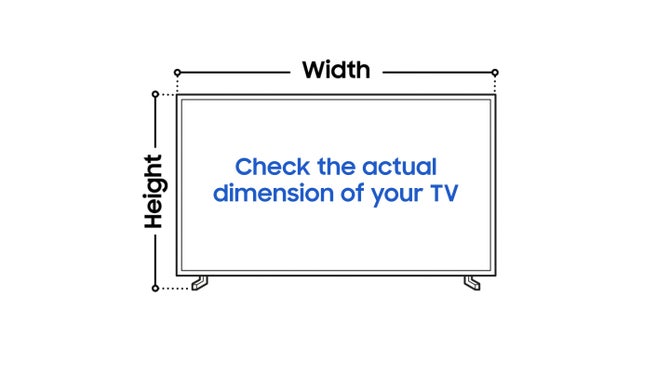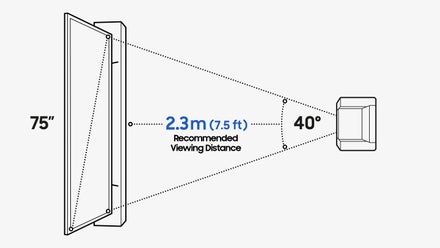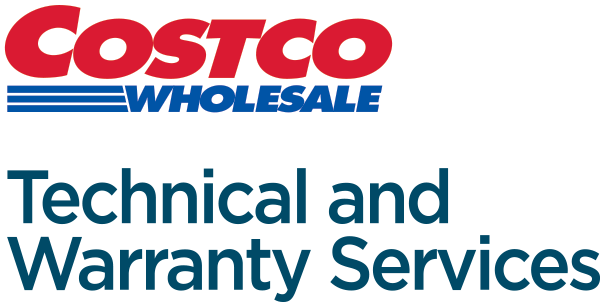TV Buying Guide
Televisions are more advanced than ever. This buying guide will help explain the latest features and technology.
Shopping for a new TV should be a fun and easy experience. But with all the screen sizes and technical details, it can sometimes feel a bit overwhelming. Whether you’re looking to create the ultimate home theater, or simply want to upgrade the TV in your living room, Costco has all the tips and information you need to find the perfect television.
Choosing the Right TV Size
Deciding what size TV is right for you can be challenging. But with a little patience and preparation, it can be a much easier process than you think. Follow these steps and suggestions to help you choose the best TV for your home.
Measure the space
Start by determining the width, depth and height of the exact area where the TV will be placed. This also includes measuring for any new furniture you plan to add, like TV stands and entertainment centers. If you plan on mounting the TV on a wall, make sure it can accommodate the size and weight of both the TV and mount.
Examine Room Layout
Take a look at the general layout of the room. Account for any furniture or obstructions that could affect the viewing experience. Measure the distance from the floor to eye level when seated, to determine the optimal height for mounting the television. Ensure there’s enough room for the TV so it doesn't overwhelm the space.
Consider viewing distance
Decide how far away you will be sitting from the TV. Guidelines suggest that you multiply the TV screen size (in inches) by a minimum of 1.2 to get the ideal viewing distance. Remember that TVs with higher resolution allow you to sit closer while still enjoying a quality picture. For instance, a 4K TV can maintain picture quality at greater distance than standard-definition TVs.
Choose a screen size
Use the viewing distance to calculate the ideal screen size for your space. For instance, if your sofa is about 6 to 7 feet away, a TV around 65-inches may be appropriate. You should also take into consideration your viewing habits and personal preferences.
Check TV dimensions
Look up the manufacturer’s dimensions for the TV model you're interested in, and then compare them with the measurements of the area where the TV will be placed. Remember to add the TV frame, bezel and stand to your overall TV dimensions. If you’re using a television console or entertainment center, make sure the television does not extend beyond the measurements of the furniture. This will make it more visually appealing and ensure better stability.
Explore mounting options
If you plan on using a TV wall mount, be sure to measure the wall space thoroughly and check the distance between the mounting holes on the back of the television. Ensure the wall mount is compatible with the size and weight of your TV. Some TV mounts offer cable management features that help keep wires organized and hidden. Evaluate the installation process and whether you can do it yourself or might need professional assistance.
Remember the accessories
It’s also important that you have any accompanying TV accessories you may need, like HDMI cables, soundbars, and cable management kits. If you have any additional devices like gaming consoles, make sure there's space for these as well.
Screen Size
What does TV size mean?
The size of a TV is determined by its diagonal length, which is measured from the upper-left corner of the display screen to the lower-right corner of the screen. For marketing purposes, televisions are described in inches, such as 55-inch, 65-inch, etc. This lets manufacturers list TVs in a single size, instead of having to include other measurements like height and width. It’s important to remember that a diagonal screen measurement does not include the TV frame, bezel or stand. To ensure that a TV is a good fit for your home, you’ll need to factor in those measurements as well.
Viewing Distance
| Recommended Viewing Distance | |
|---|---|
| 32" screen | 3.2 ft |
| 43" screen | 4.3 ft |
| 55" screen | 5.5 ft |
| 65" screen | 6.5 ft |
| 75" screen | 7.5 ft |
| 85" screen | 8.5 ft |
| 100" screen | 10 ft |
To find the ideal TV viewing distance, multiply the screen size by 1.2. For example, you should be sitting approximately 5.5-feet away from a 55” television. This methodology is just a starting point in determining the best viewing distance and location for your television. Other factors, such as display resolution and field of view should also be considered.
Of course, the best viewing distance from your TV screen is really a question of personal choice. People with poor eyesight or who want a more captivating experience may enjoy sitting closer, while casual viewers may prefer a little more distance. There are also some people who adjust their viewing distance based on the type of movie or television program they’re watching.
Resolution

What is screen resolution?
Resolution refers to the number of pixels a TV screen can display. Pixels are tiny dots that create an image. The more pixels a display has, the sharper and more detailed the images will be. With a high-resolution TV, you can also sit closer without experiencing image distortion.
Full HD TVs provide precise and lifelike imagery for a great viewing experience. 4K Ultra HD TVs have 4 times as many pixels as Full HD, offering incredible clarity.
Another benefit to owning a 4K Ultra HD television is high dynamic range (HDR). This advanced technology offers an even wider range of color and contrast to further improve videos and images.
| Type | Horizontal & Vertical Pixel | Resolution |
|---|---|---|
| Full HD | 1920 x 1080 | 1080p |
| 4K UHD | 3840 x 2160 | 2160p |
Refresh Rate

Refresh rate represents the number of times per second that the image is flashed or refreshed on the screen. By flashing a series of still images, the TV creates the illusion of motion. The refresh rate is measured in hertz (Hz). For example: if a refresh rate is 60Hz, the image is refreshed 60 times per second. Most televisions have a native refresh rate of 60Hz.
Refresh rate is the industry standard for measuring motion rates. However, many television brands will use varying terminology to describe the motion smoothness rather than how quickly the image refreshes. For instance, brands may list Motion Rate 120 or TruMotion 120, but the native refresh rate is 60Hz. What's the difference? TV manufacturers can apply motion enhancement technologies, which improves smoothness and reduces shakiness. In general, the higher the motion technology, the smoother the picture will appear.
TV Types
There are several different types of TVs: LED, Mini-LED, OLED, and QLED. All of these have screens that feature light-emitting diodes, which produce extremely vibrant and lifelike colors. Each technology is energy-efficient, and offers its own benefits. Read on to discover which type of TV is right for you.
LED TVs are a type of LCD television that is illuminated by LED (light-emitting diodes) positioned around the edge of the display screen, instead of being located in the back. The benefits of this edge-lighting method are a thinner frame, greater brightness levels, and incredible picture quality. LED televisions are also very energy efficient. LEDs do have some challenges. They don't offer the same color vibrancy and contrast levels of OLED or QLED TVs, and may still exhibit motion blur during fast-moving scenes.
Benefits
- Thinner frame
- High brightness levels
- Energy efficient
- Affordable
QLED TVs are LCD televisions that feature color-boosting nanocrystals, often called quantum dots, that are located between the screen pixels and backlight. Each microscopic dot emits a specific color of light, that when combined, creates a wide range of vivid colors. QLED TVs are best known for their tremendous overall brightness, color accuracy and crisp imagery, resulting in a more authentic viewing experience. Their high luminosity makes them ideal for bright rooms or spaces with a lot of natural light. In comparison to other models, QLED TVs are more expensive than traditional LCD TVs, and they typically do not match the wide viewing angles and black levels of OLEDs.
Benefits
- Vivid colors
- Crisp imagery
- Extremely bright
Mini-LED TVs offer superior brightness and contrast control, which makes them a great choice for people who enjoy a vivid performance. These televisions have a large number of tiny LEDs dispersed across the back of the screen, reducing the dimming zone and creating an excellent contrast ratio. Mini-LED TVs are a less expensive option to OLED televisions. However, they are not quite as pixel-perfect and have the potential for glare and halo effects.
Benefits
- Large screens
- Excellent contrast
- Superior brightness
- Works well in natural light
- Less expensive than OLED
OLED TVs are known for their exceptional contrast, color range and image quality. Unlike other LED TVs, these televisions do not require backlighting to illuminate images on the screen. Instead, OLED televisions have self-illuminating pixels that can be controlled independently. OLED televisions are lighter and thinner than other display screen technologies, and they produce incredibly rich colors and perfect black levels that make images pop on screen. More importantly, OLEDs offer an extraordinary level of contrast that is nearly impossible to attain with traditional LED TVs. Many people consider OLED TVs to have the best overall picture quality.
Benefits
- Thin, light-weight frame
- Exceptional contrast
- Good in dark rooms
- Rich color and deep black levels
- Superior overall picture quality
High Dynamic Range
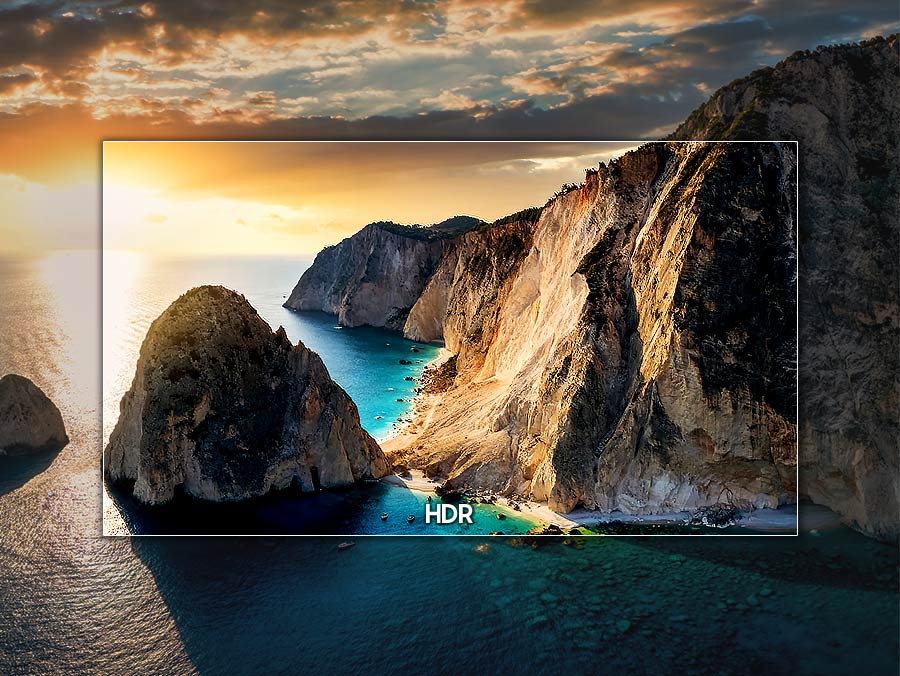
High Dynamic Range (HDR) refers to the TV’s ability to deliver more colors, better contrast levels and increased brightness compared with standard HD and Ultra HD sets.
HDR10 is the most commonly used format for HDR. HDR10 has the ability to adjust black levels and peak brightness for an entire movie or show. Dolby Vision HDR and HDR10+ offer an additional step up in HDR experience since they offer scene-by-scene optimization.
While most 4K TVs can display HDR content, more premium TVs from major brands will offer a big step up in HDR performance largely due to higher peak brightness than standard TVs.
Smart TVs
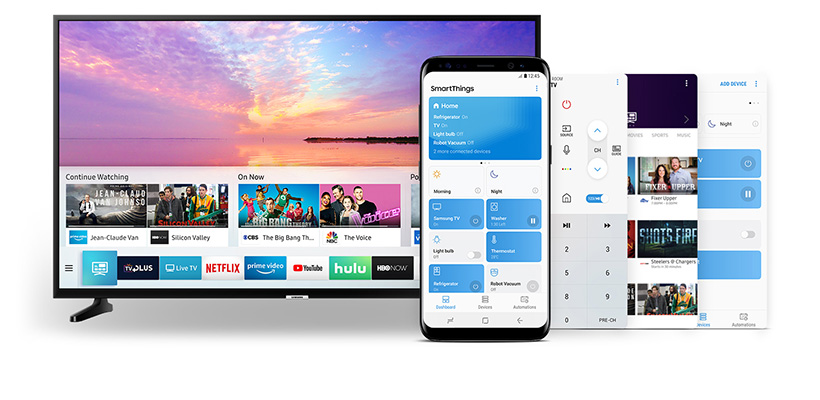
When a TV is listed as smart, it is referring to the TV’s capability to connect to the internet. This functionality enables viewers to stream a variety of apps and services including Netflix, Hulu, YouTube and more. TV manufacturers use a variety of operating systems, each with their own benefits and features. If you are seeking a specific feature, it's important to check that the TV operating system you choose offers this option, as some apps and content are unique to certain smart platforms. Some examples of popular smart TV platforms include Google TV, Samsung Tizen, LG webOS and Fire TV.
For an optimal experience, smart TVs need adequate internet speed and close proximity to your router; otherwise you may experience poor connection and buffering issues.
In order to stream 4K Ultra HD-quality content; an internet speed of 25 Mbps is recommended. You may consider upgrading your internet service and/or router.
Protect Your Purchase
Costco Technical and Warranty Services with 2-year warranty
Costco extends the manufacturer's warranty on televisions to 2 years from the date of purchase. See the manufacturer's warranty for specific coverage terms.
For warranty service, contact Costco Technical and Warranty Services TOLL-FREE at 1-866-861-0450
Allstate
For additional coverage, Allstate protection plans are available for all TV purchases. Allstate offers a 3-year extended protection plan after the 2-year Costco Technical and Warranty Services coverage has ended (Allstate will cover years 3, 4 and 5). There are multiple plans depending on the sell price of the TV so be sure to add the right coverage for your television purchase.


